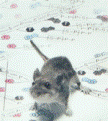Papers in the Biological Sciences

Jay F. Storz Publications
Document Type
Article
Date of this Version
5-1999
Abstract
Populations of social mammals are characterized by several demographic features that may increase the magnitude of genetic drift relative to other evolutionary forces. In particular, polygynous mating and socially mediated constraints on gene flow have been proposed to foster random genetic differentiation among social groups, thereby accelerating rates of evolutionary change. To evaluate this hypothesized link between sociality and genetic sub- division, I examined results of published studies of mammalian populations in which genetic structuring was assessed at the level of social groups. Population genetic data from a taxonomically diverse array of social mammals revealed low to moderately high levels of genetic differentiation among social groups (FsT = 0.006-0.227), coupled with consistently high levels of within-group heterozygosity indicated by negative Fis-values. Relatively higher levels of genetic structuring were observed in populations in which sampling effects associated with polygynous mating were reinforced by female philopatry. The degree of genetic subdivision observed in several taxa, most notably black-tailed prairie dogs (Cynomys ludovicianus) and red howler monkeys (Alouatta seniculus), indicated that social organization can have a profound impact on population genetic structure. However, in most cases, social barriers to gene flow are likely insufficient to promote the degree of genetic subdivision and inbreeding envisioned by models of rapid drift-induced speciation. It appears that social mammals generally are characterized by a dynamic non-equilibrium mode of population structure in which local demes are characterized simultaneously by small variance effective sizes and large inbreeding effective sizes.


Comments
Published in Journal of Mammalogy, Vol. 80, No. 2 (May 1999), pp. 553-569. Published by the American Society of Mammalogists. Used by permission.